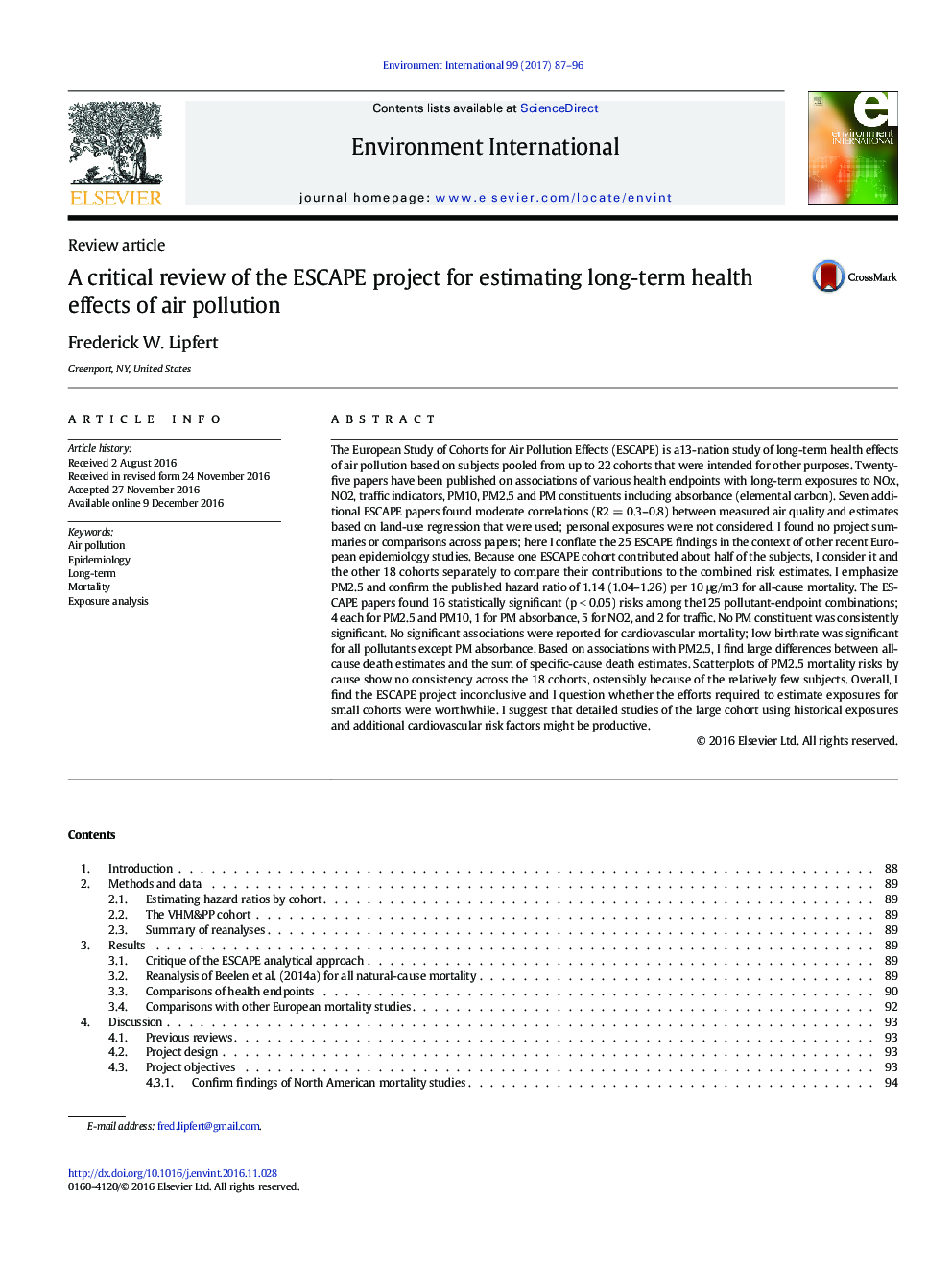| Article ID | Journal | Published Year | Pages | File Type |
|---|---|---|---|---|
| 5748399 | Environment International | 2017 | 10 Pages |
â¢ESCAPE: pooled epidemiological analyses of up to 19 cohorts in 13 countriesâ¢25 papers on associations of health indicators with up to 8 air pollutantsâ¢One cohort with about half of the total subjects was considered separately.â¢16 of 125 pollutant-health endpoint combinations were significant (p < 0.05).â¢Significant mortality associations: CVD, none; total, PM2.5 (only species tested)
The European Study of Cohorts for Air Pollution Effects (ESCAPE) is a13-nation study of long-term health effects of air pollution based on subjects pooled from up to 22 cohorts that were intended for other purposes. Twenty-five papers have been published on associations of various health endpoints with long-term exposures to NOx, NO2, traffic indicators, PM10, PM2.5 and PM constituents including absorbance (elemental carbon). Seven additional ESCAPE papers found moderate correlations (R2 = 0.3-0.8) between measured air quality and estimates based on land-use regression that were used; personal exposures were not considered. I found no project summaries or comparisons across papers; here I conflate the 25 ESCAPE findings in the context of other recent European epidemiology studies. Because one ESCAPE cohort contributed about half of the subjects, I consider it and the other 18 cohorts separately to compare their contributions to the combined risk estimates. I emphasize PM2.5 and confirm the published hazard ratio of 1.14 (1.04-1.26) per 10 μg/m3 for all-cause mortality. The ESCAPE papers found 16 statistically significant (p < 0.05) risks among the125 pollutant-endpoint combinations; 4 each for PM2.5 and PM10, 1 for PM absorbance, 5 for NO2, and 2 for traffic. No PM constituent was consistently significant. No significant associations were reported for cardiovascular mortality; low birthrate was significant for all pollutants except PM absorbance. Based on associations with PM2.5, I find large differences between all-cause death estimates and the sum of specific-cause death estimates. Scatterplots of PM2.5 mortality risks by cause show no consistency across the 18 cohorts, ostensibly because of the relatively few subjects. Overall, I find the ESCAPE project inconclusive and I question whether the efforts required to estimate exposures for small cohorts were worthwhile. I suggest that detailed studies of the large cohort using historical exposures and additional cardiovascular risk factors might be productive.
